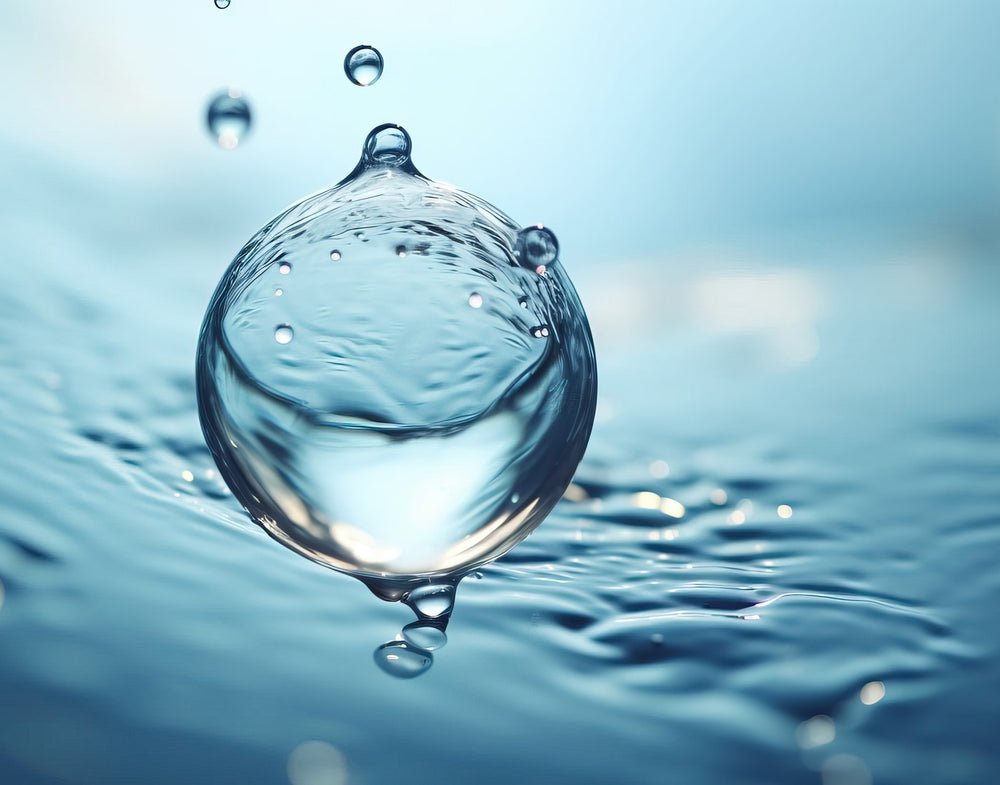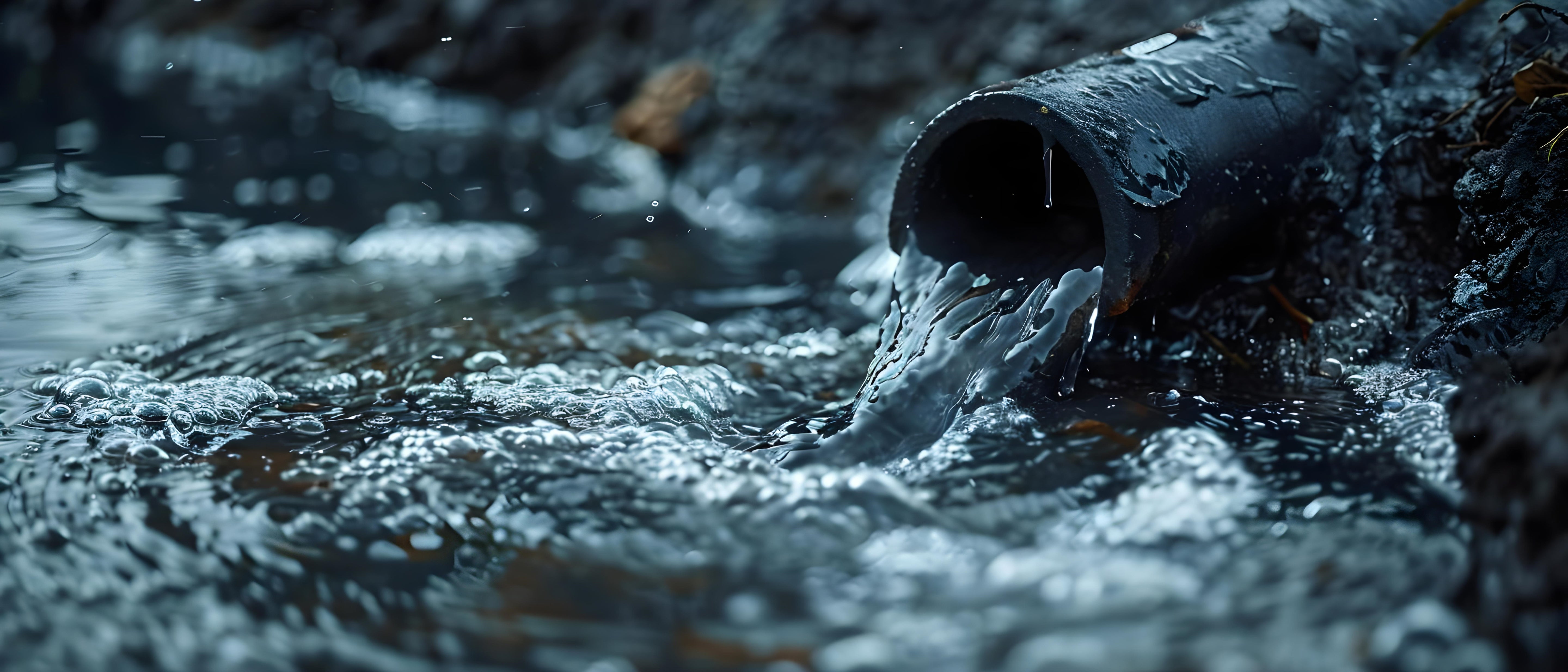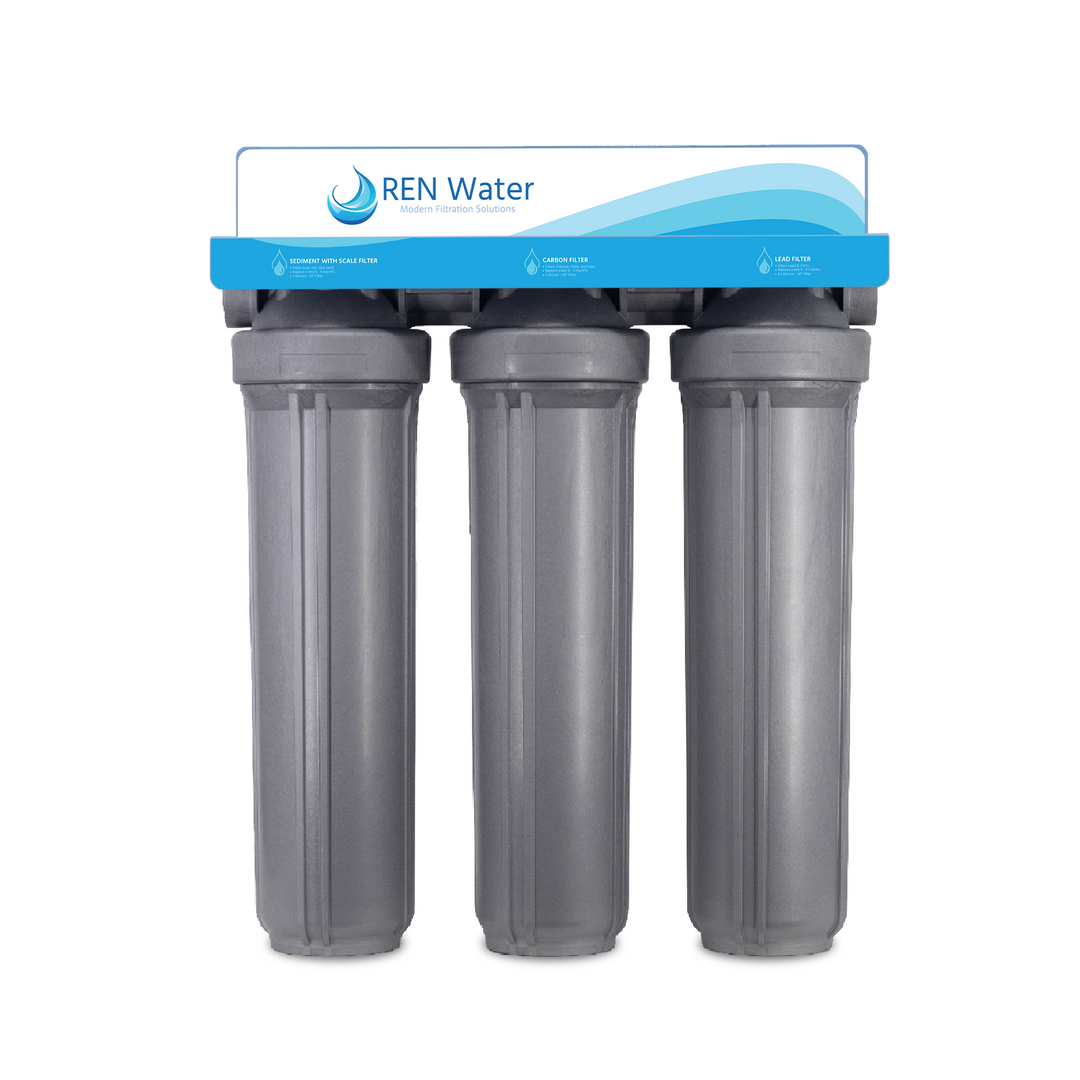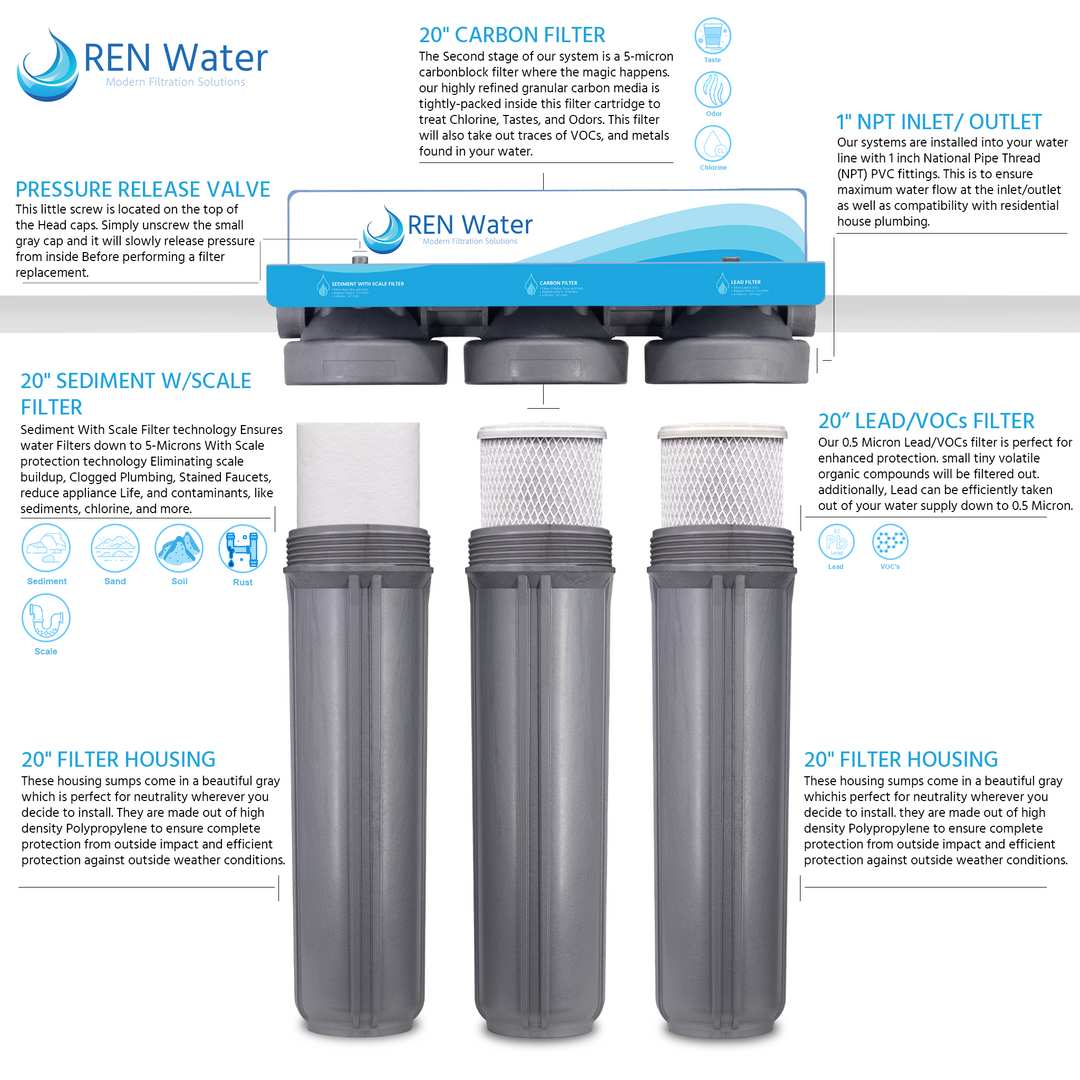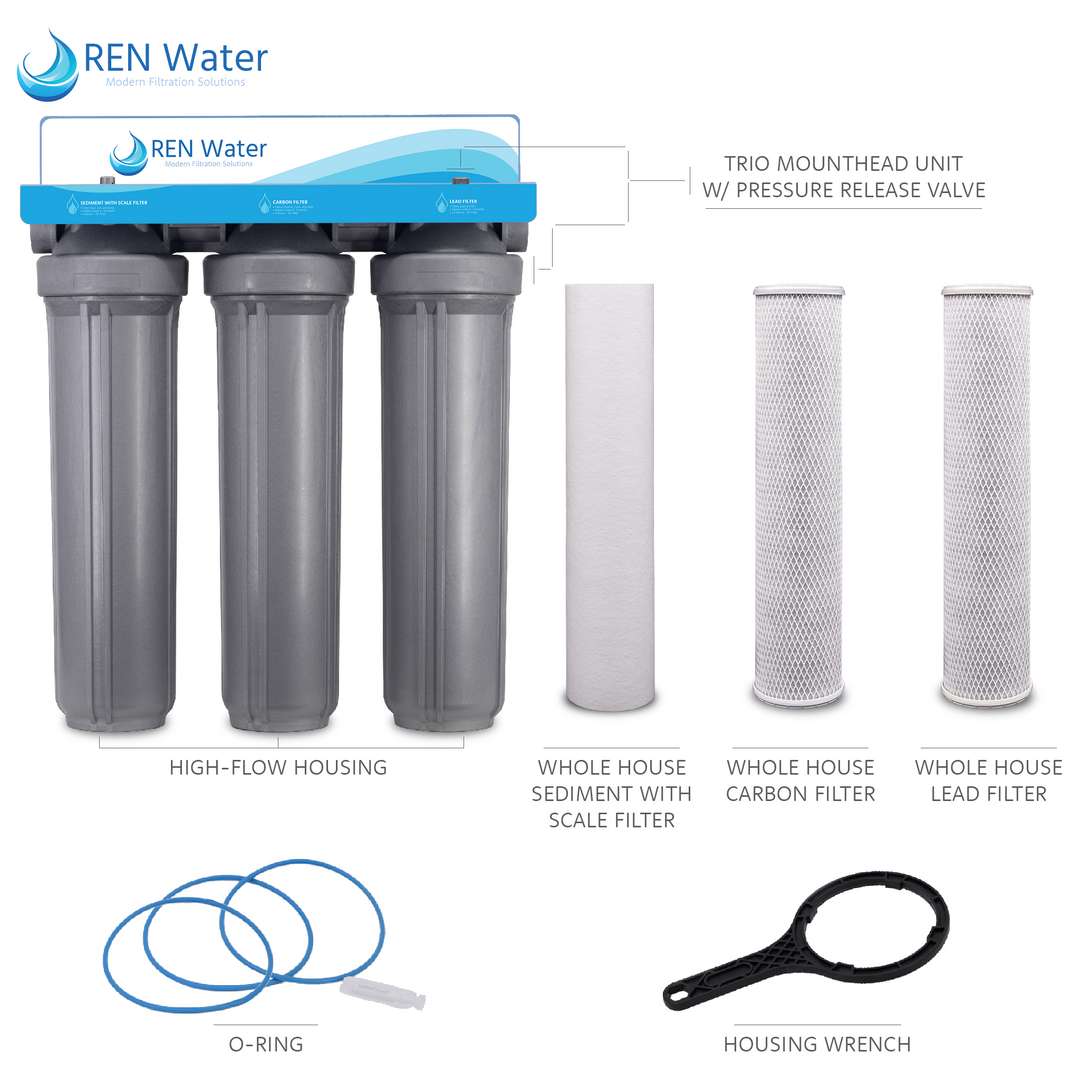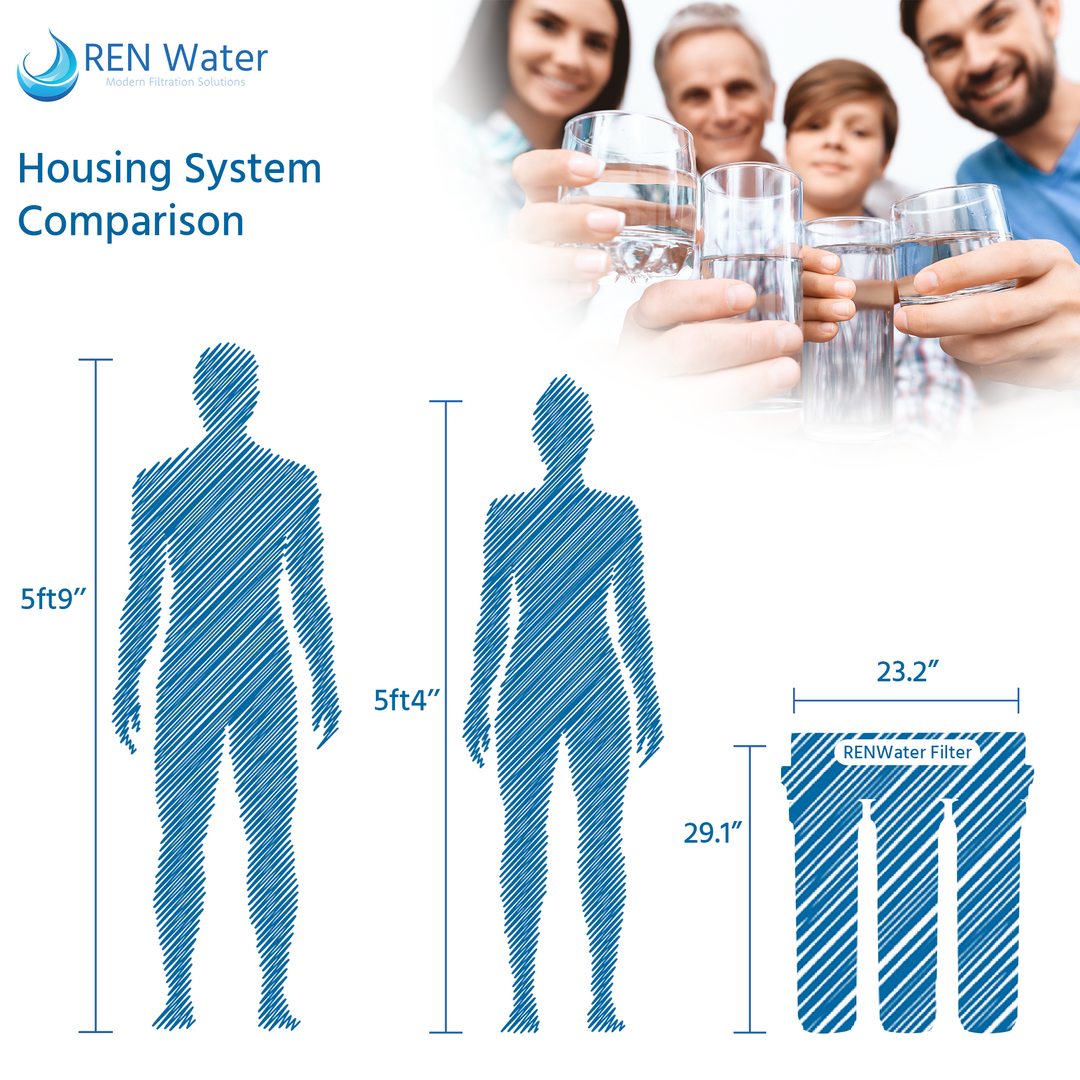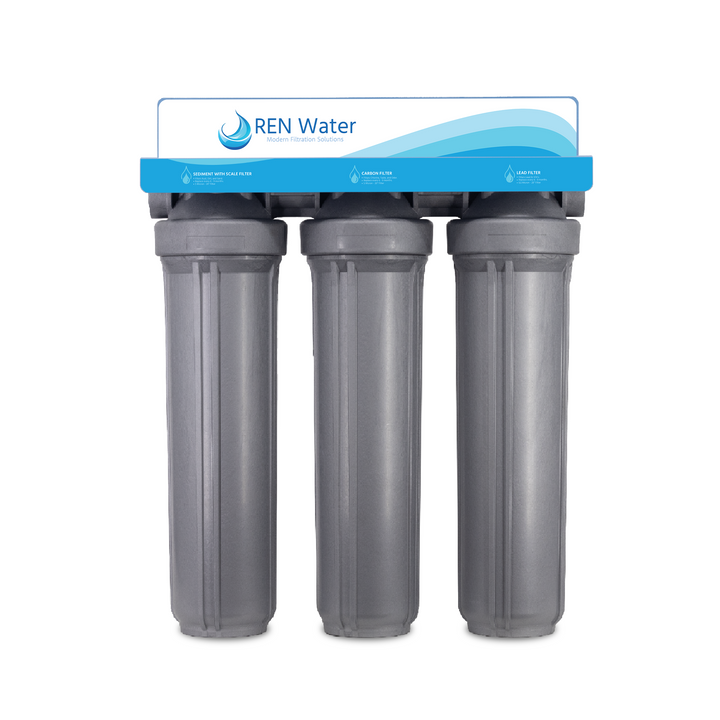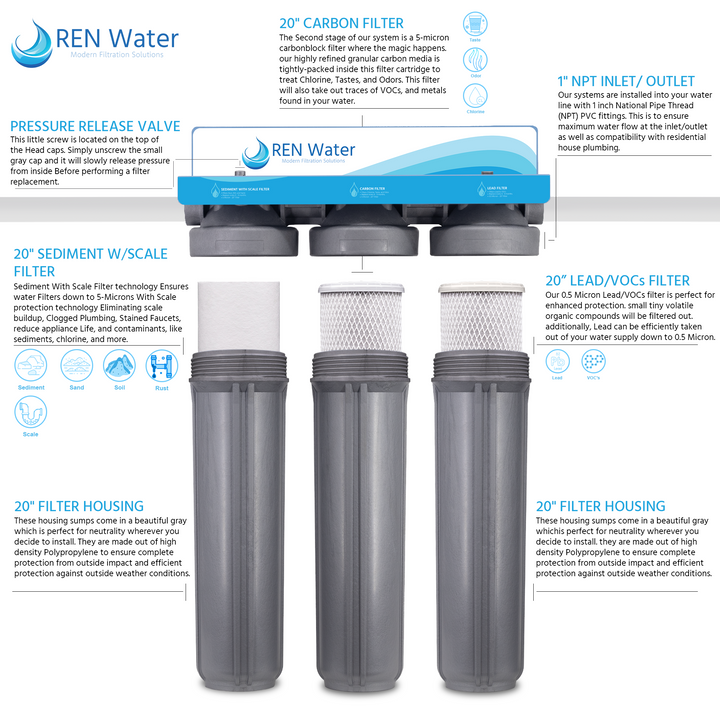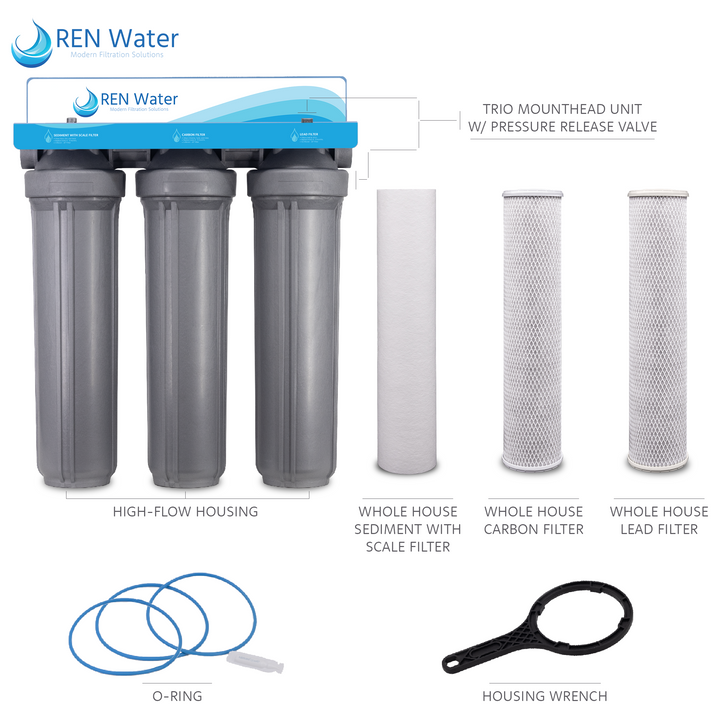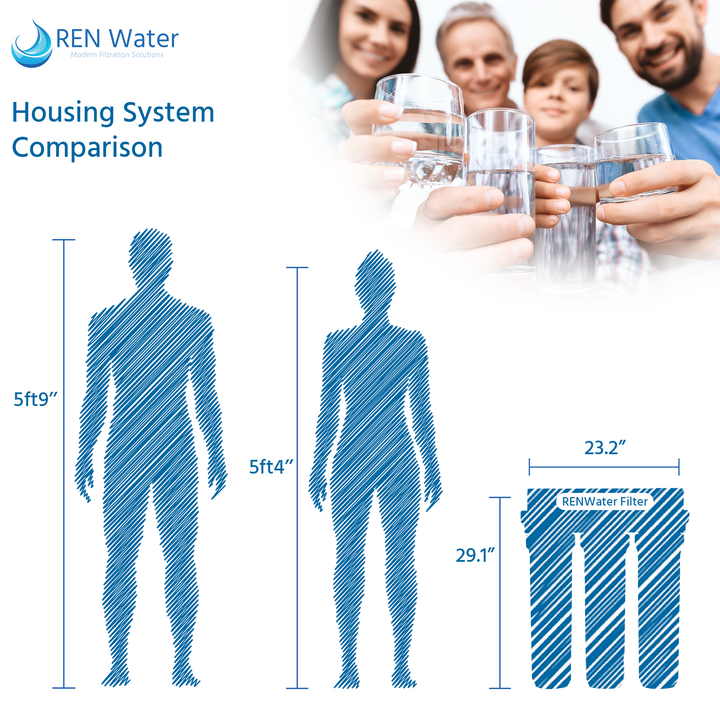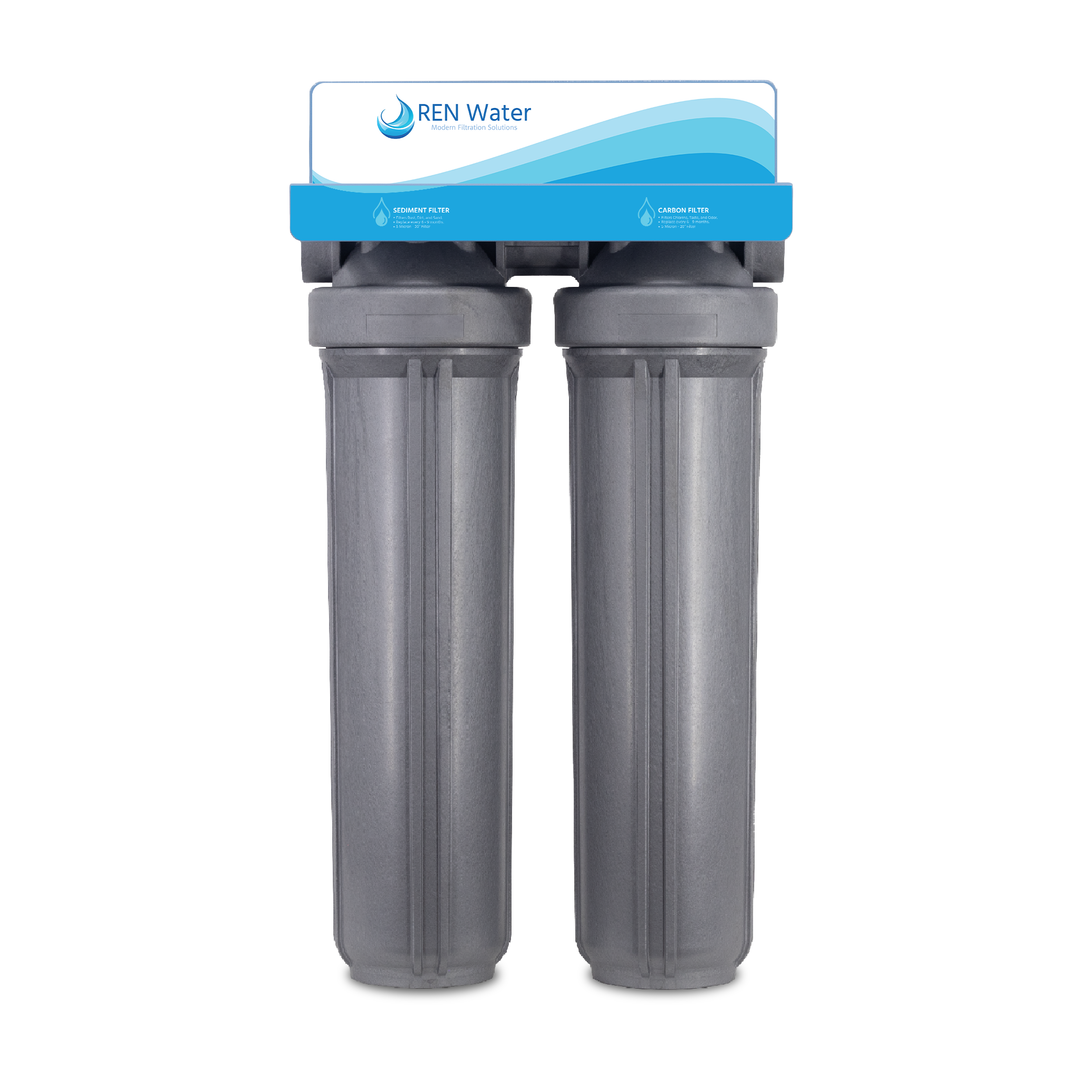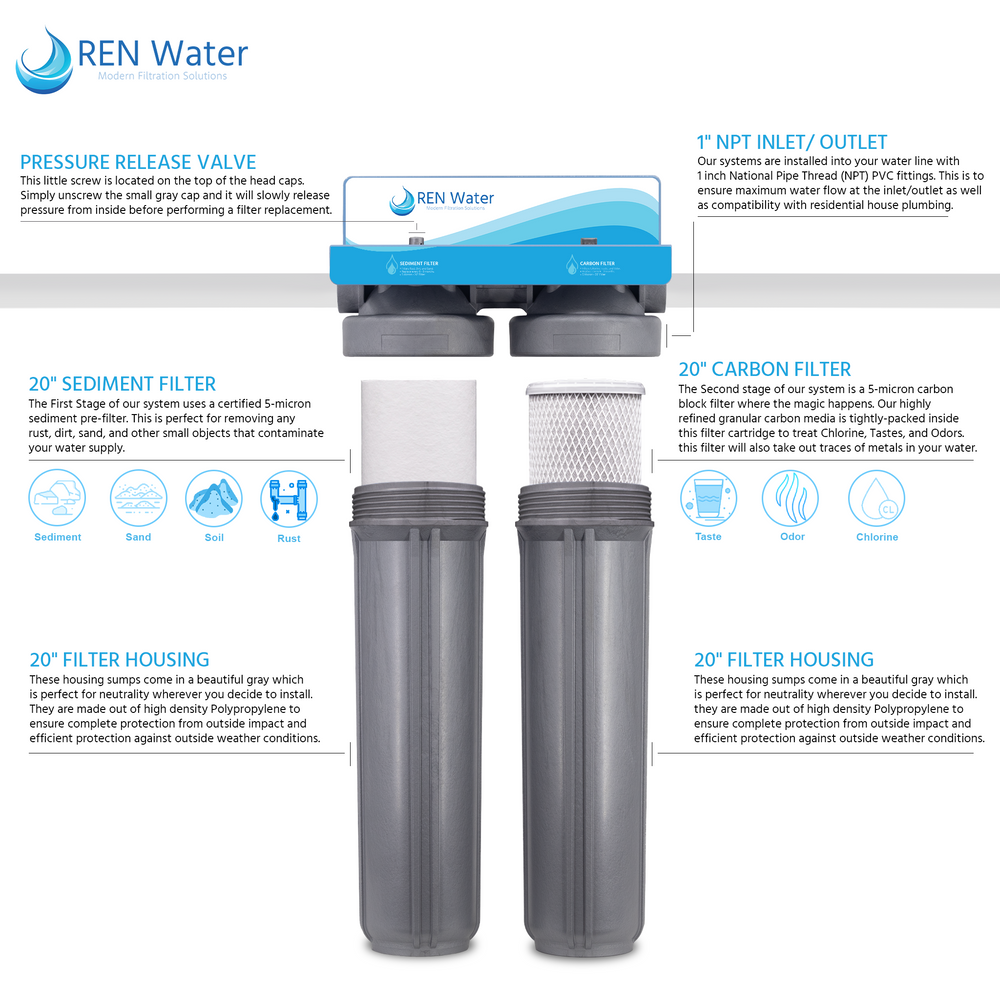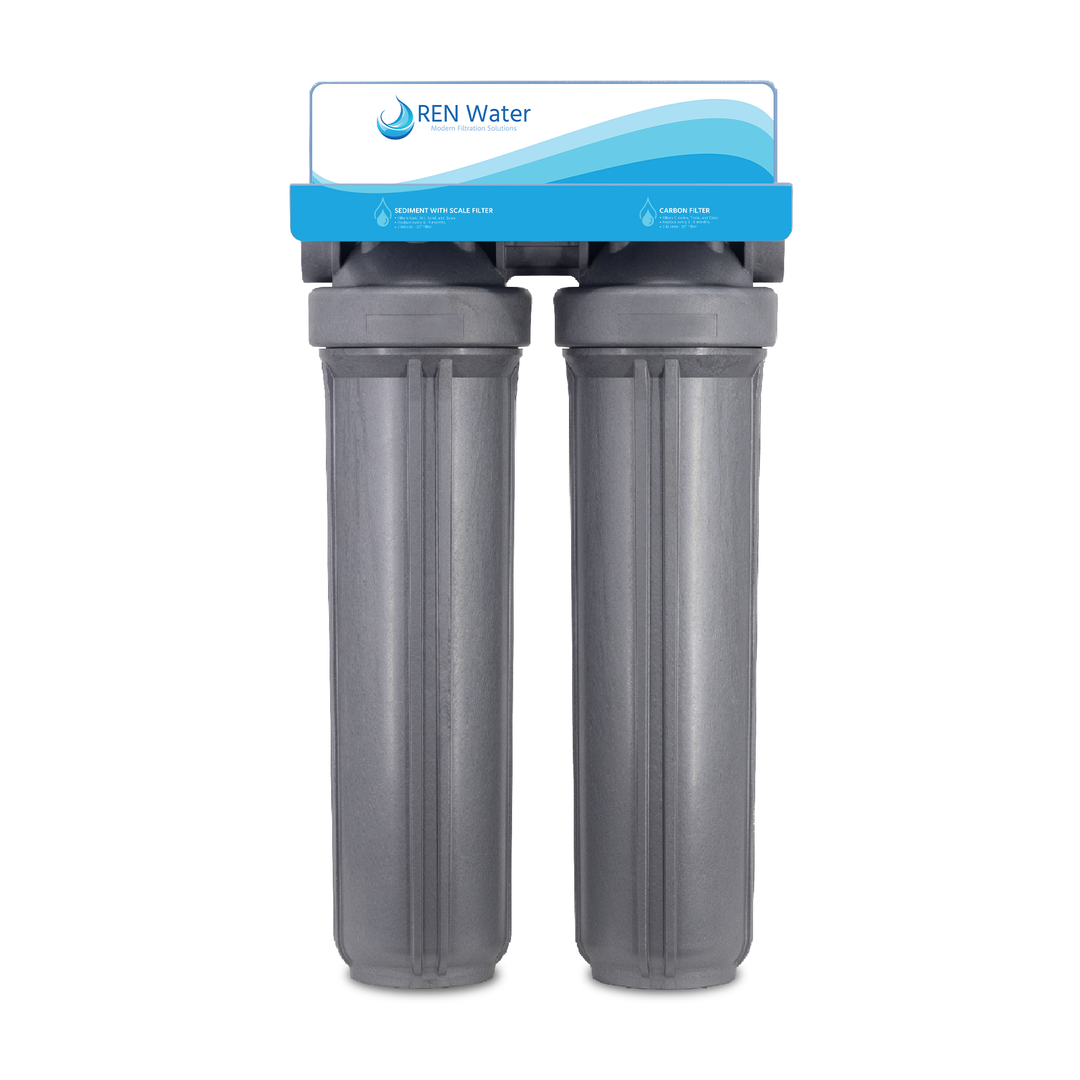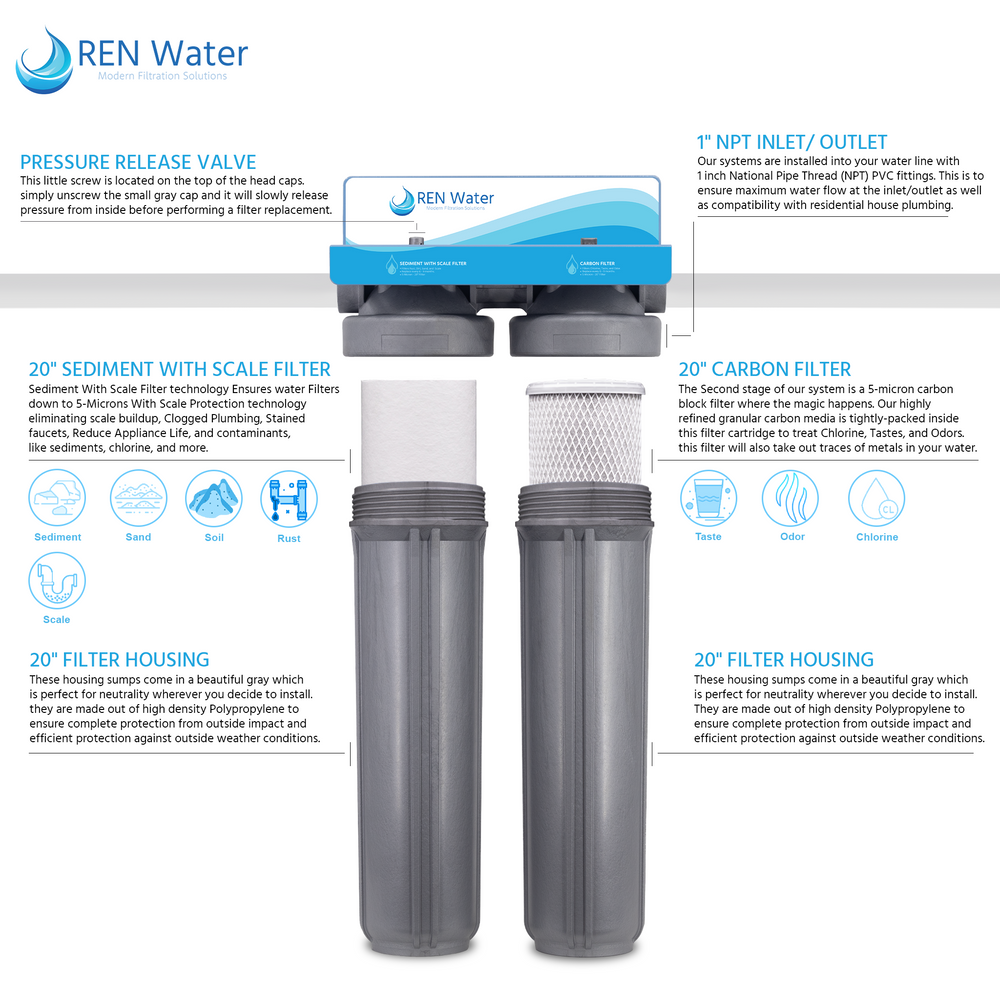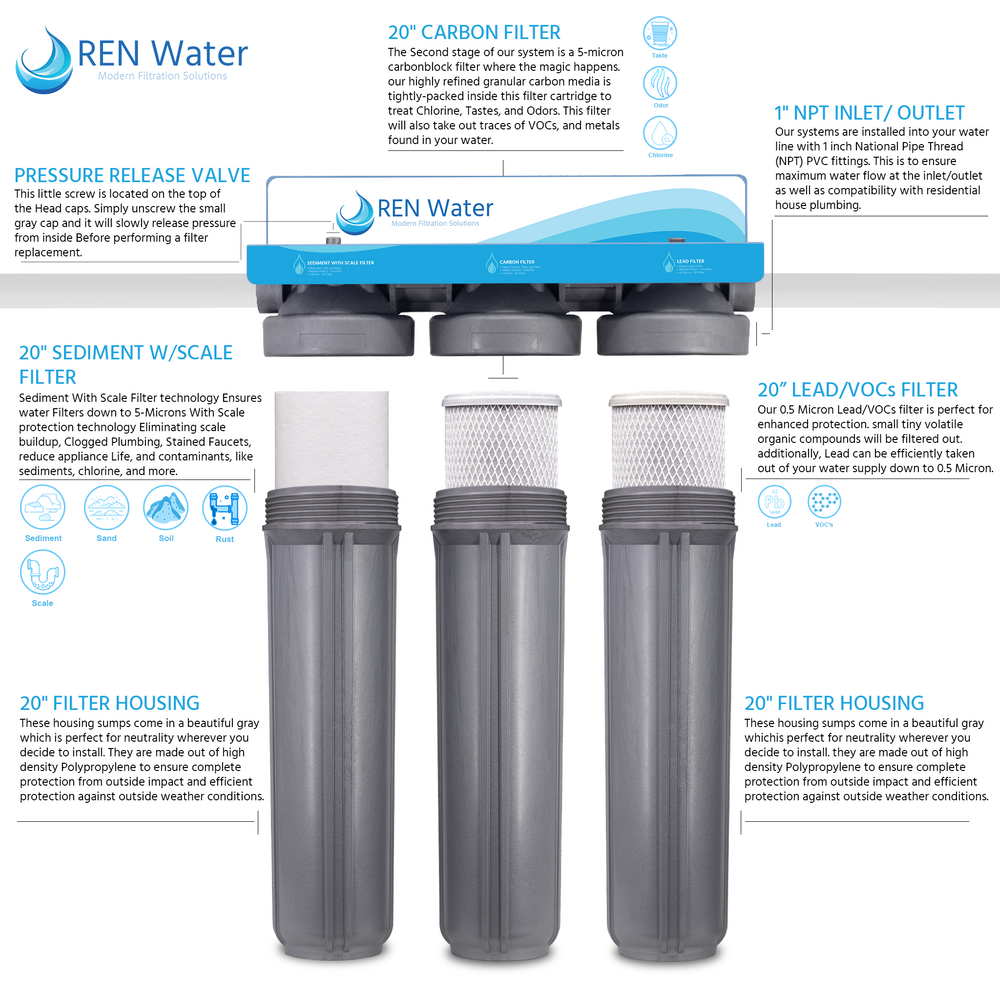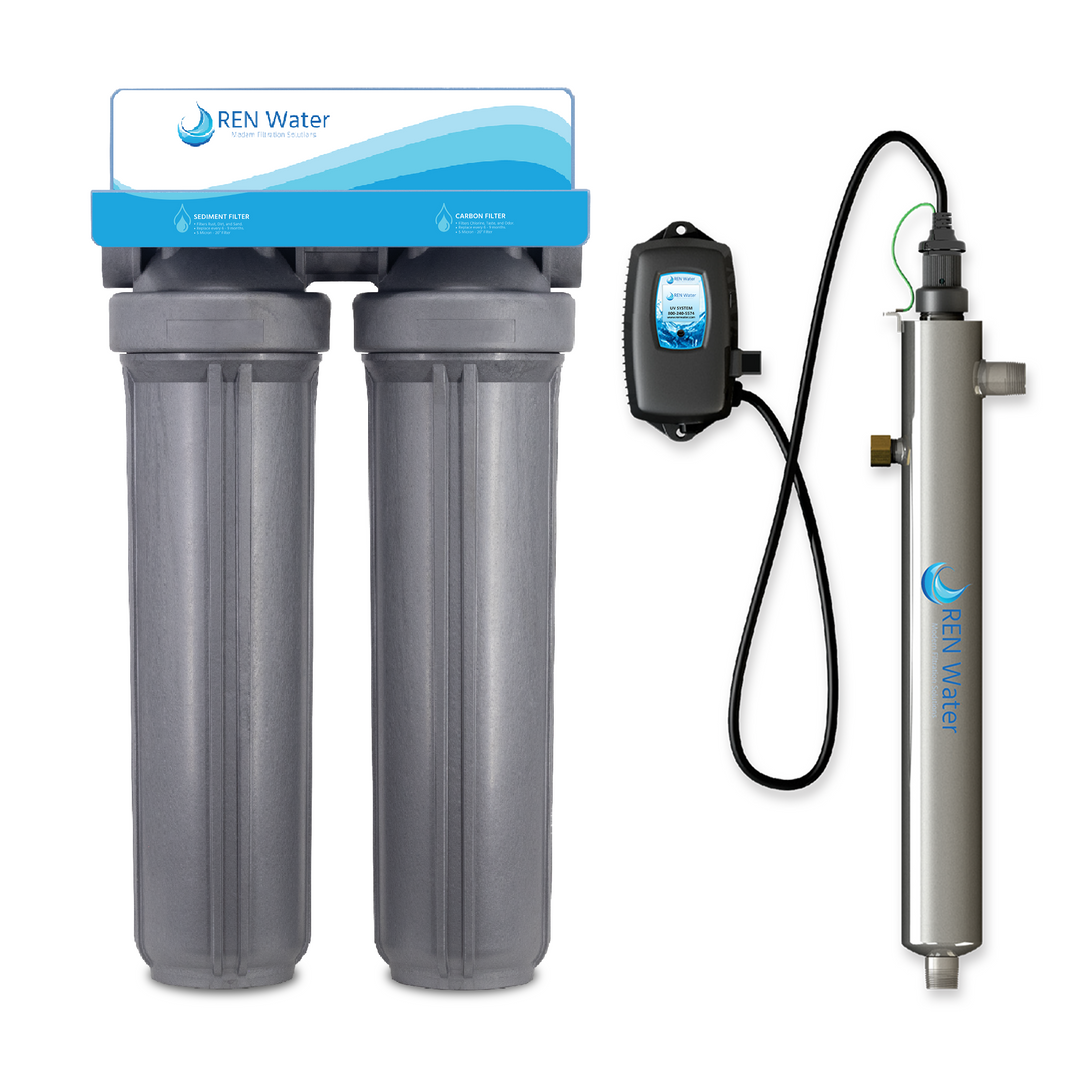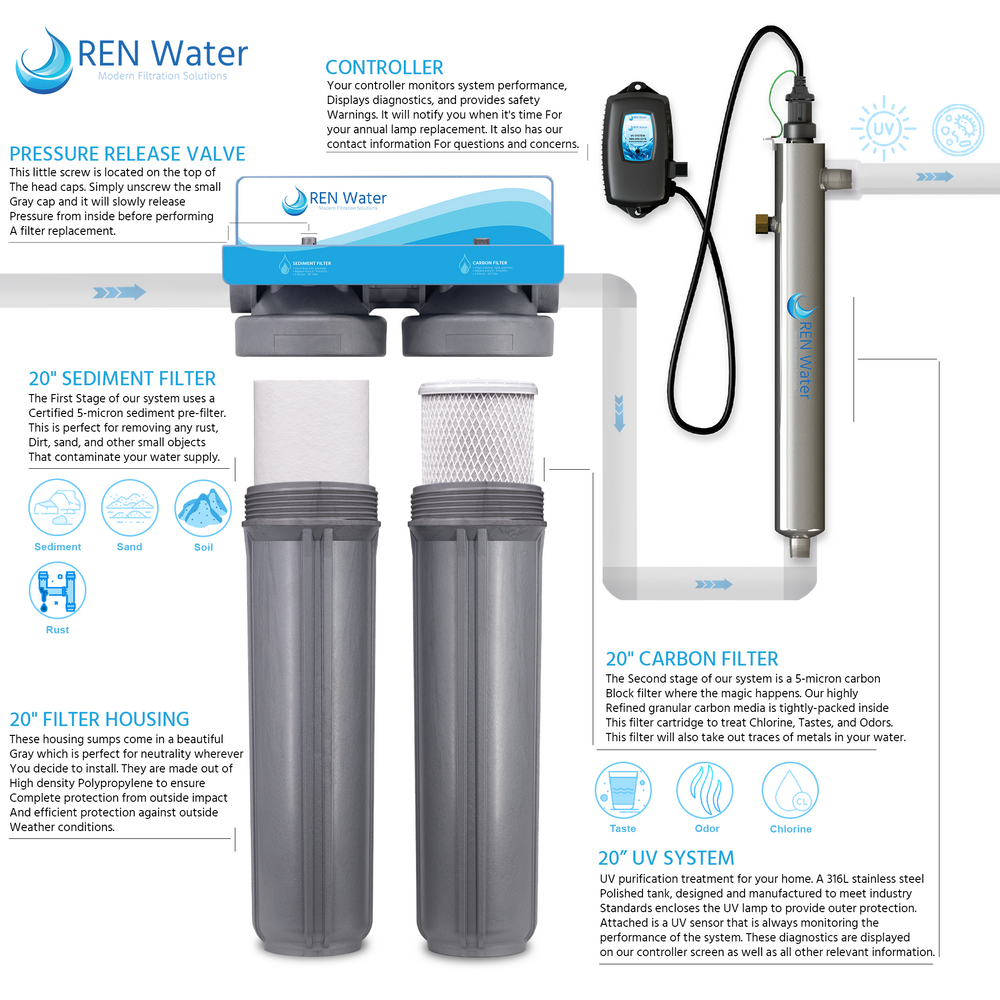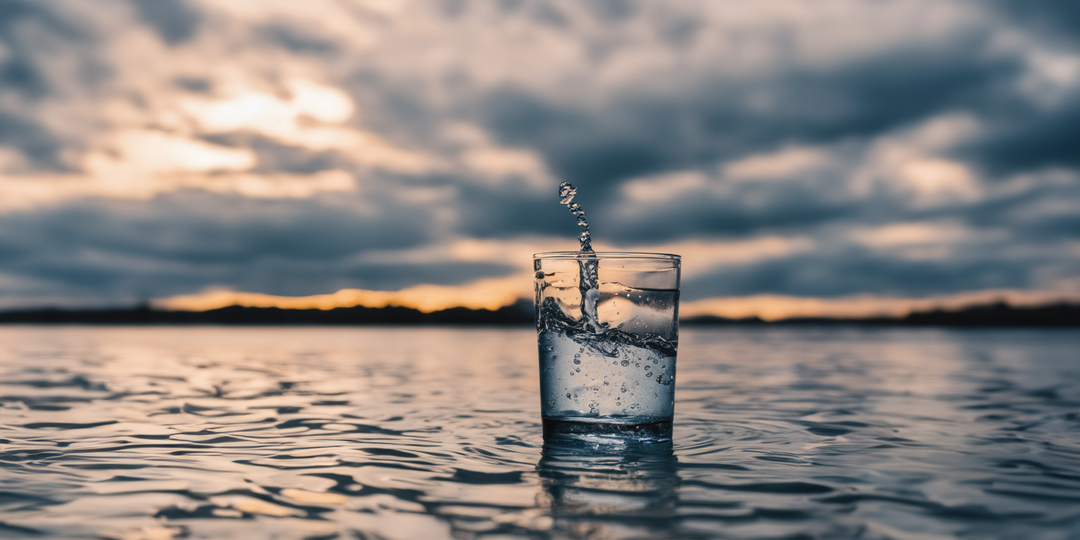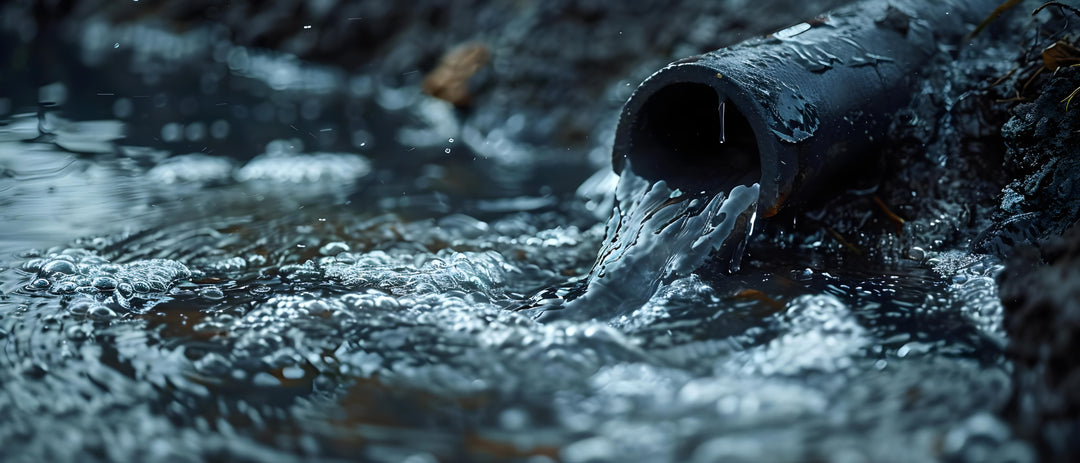Safeguard your family's well-being with water that not only tastes great but promotes better health! REN Water's Whole House Water Filtration Systems works by intercepting dangerous contaminants such as Chlorine, Chloramine, Copper, Lead, Mercury, Rust, Sand, Dirt, Volatile Organic Compounds (VOCs), Pesticides, Industrial Chemicals, and many more.
-
Sediment Protection: Filters Rust, Dirt, and Sand down to 5 - Microns!
-
Salt-Free Scale Softener: Scale Protection technology removes limescale buildup, protecting you from hard water
-
Activated Carbon: 5-Micron removal Chlorine, Tastes, Odors, and more!
-
Lead/VOCs Protection: Filter out Lead and VOCs down to 0.5 microns!
-
Low Maintenance: No Wastewater, drainage system, or 40 LB resin bags.
-
No Pressure Drop: Households with 6 bathrooms or water usage of 15 Gallons Per Minute
-
MADE IN USA: Our filtration systems are made in America.


